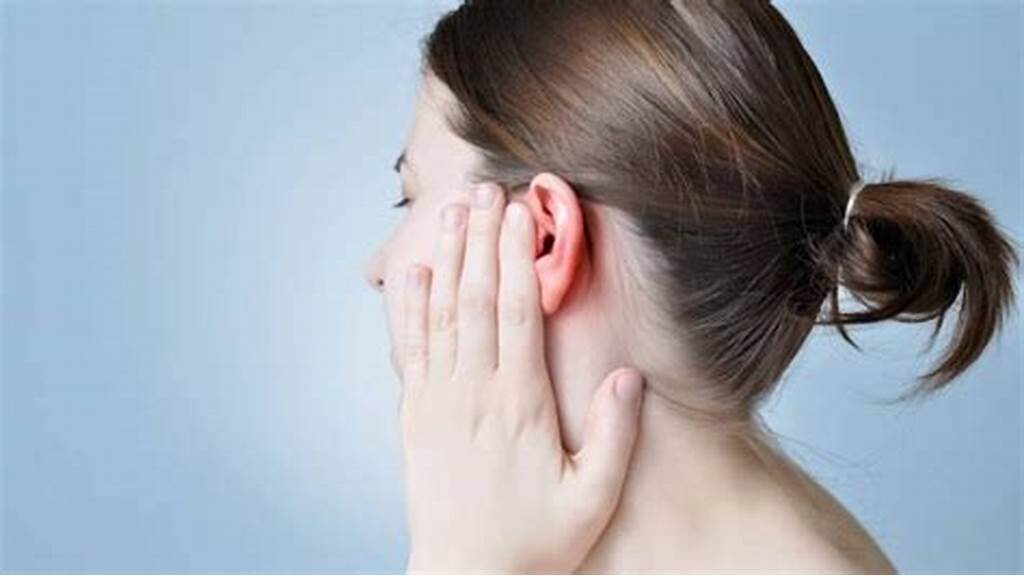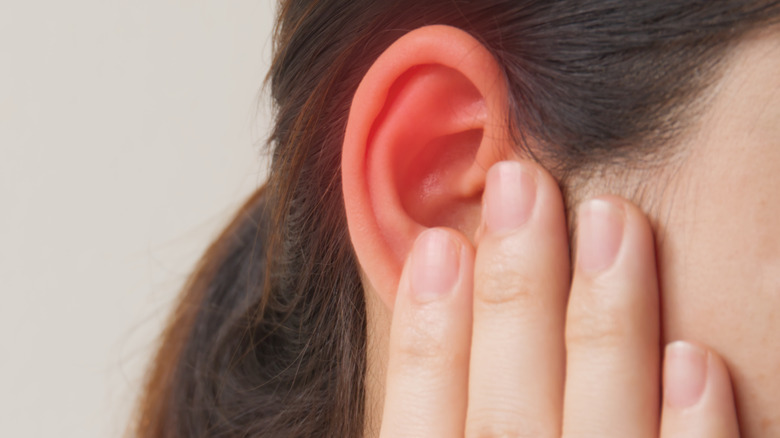Imagine enjoying a drink or glass of wine at a social event when suddenly, you discover your ears are getting red. Although it could appear to be a mystical phenomenon, there is a scientific reason behind it. This phenomenon, often known as the “alcohol flushing reaction,” has long piqued the interest of both scientists and courageous individuals. We’ll explore the science of why drinking alcohol causes your ears to become red in this article.
Table of Contents
ToggleAlcohol Flush Reaction: The Basics
Alcohol consumption causes the alcohol flushing reaction, commonly referred to as the “Asian flushing” or the “Asian glow,” which is an emotional response. It’s crucial to remember that this response can happen in people of all ethnic origins, despite the term suggesting that it’s mostly common among persons of Asian heritage.
The irritation of the skin, especially on the face and neck, and frequently spreading to the ears, is the primary indicator of an alcohol flush response. Vasodilation, a process that causes blood vessels close to the skin’s surface to enlarge, causes this redness. Genetics and how the body processes alcohol are the exact causes of this response.
Genetic Foundations
Aldehyde dehydrogenase 2 (ALDH2), a protein that regulates the body’s metabolism of alcohol, is principally responsible for the alcohol flush response. The flush response is caused by a genetic variation that interferes with ALDH2’s normal operation.
When alcohol is taken, it is converted into acetaldehyde, a poisonous chemical that, amongst additional signs, can result in face flushing. Typically, ALDH2 is essential for acetaldehyde’s transformation into the less dangerous acetic acid. Nevertheless, ALDH2 is less efficient in reducing acetaldehyde in those with genetic variation. Because of this, acetaldehyde builds up in the body, resulting in several signs and symptoms, notably the typical redness of the skin.
Vasodilation and Color Change
Acetaldehyde buildup causes a discharge of histamines, a class of substances that regulate the immune system’s reaction to the body. Blood arteries widen due to histamines, increasing blood flow to the skin’s epidermis. This dilatation makes skin reddened, especially on the face, neck, and ears.
While it’s crucial to stress that the alcoholic flush response is not a real allergic reaction to alcohol vasodilation, the body’s defense against acetaldehyde buildup resembles a reaction caused by allergies. However, the redness and intensity that some people sense can be unsettling and even humiliating, particularly when displayed in public.
Factors and Variation
It’s important to note that every person who gets an alcohol flush response has the same level of redness and alcohol consumption. The severity of the reaction is influenced by several variables, including the kind and quantity of alcohol drank, personal tolerance stages, and genetic variances.
Besides skin redness, alcohol flush response symptoms can also include other things. Other symptoms that some people could encounter include a faster heartbeat, nausea, vertigo, and a generalized sense of warmth. The body’s attempts to metabolize and get rid of the acetaldehyde are what causes these signs.
Beyond the Surface
The alcohol flush reaction may appear trivial, yet it provides insight into the complex interactions between metabolism, heredity, and the body’s reaction to external substances. This answer further emphasizes how crucial it is to comprehend how each of our bodies reacts differently to different stimuli.
Knowing one’s boundaries when drinking alcohol is essential for those who suffer the alcohol flush response. These people’s excessive alcohol use might cause discomfort, worsen symptoms, and pose health hazards. So while drinking alcohol, paying attention to your body and exercising in moderation is important.
Health Problems Associated with Alcohol Risk
The alcohol flush reaction may indicate how the body processes alcohol in a particular person. People who suffer from this response may have less effective acetaldehyde breakdown, making them more vulnerable to alcohol-related health problems.
Long-term exposure to acetaldehyde at high concentrations has been associated with an elevated risk of several illnesses, including certain malignancies, liver disorders, and cardiovascular issues.
Genetic Variability
People of East Asian heritage are more likely to have the genetic variation that causes the alcohol flush reaction. Though to a lesser extent, ALDH2 variants are also seen in other groups. Different degrees of susceptibility to alcohol and acetaldehyde buildup may emerge from this variation.
Harmful Effects

Alcohol flush reaction, which results in redness of the ears, is not dangerous in and of itself, but it could indicate issues with the metabolism of alcohol and its derivatives. The accumulation of acetaldehyde, a toxic consequence of the body’s digestion of alcohol, produces redness.
- Acetaldehyde: While the redness alone may not be hazardous, an accumulation of acetaldehyde can have several adverse repercussions. It can make your heart beat faster or irregularly by raising the rate at which it pumps blood. Deposition of acetaldehyde can result in feeling sick, throwing up, and overall uneasiness. Acetaldehyde buildup has been scientifically linked to migraines and, occasionally, headaches. Acetaldehyde, also known as low blood pressure, can lower the blood pressure in the arteries. It can alter the heart’s rhythm, resulting in hypertension or a drop in blood pressure, which could lead to disorientation and vertigo.
- Effects on Cancer: Prolonged exposure to acetaldehyde has been linked to an increased risk of some cancers, notably esophageal cancer, especially among those with a family tradition of having a weak alcohol flush reaction.
- Liver Health: Genetic factors that result in ineffective alcohol and acetaldehyde metabolism can put the liver under additional stress, which may eventually lead to problems with liver health.
Conclusion
The body’s complex genetic composition and the way it consumes and metabolizes alcohol are to blame for the redness of the ears and skin that occurs after ingesting alcohol. The alcohol flush response is a reminder of the distinctive ways our bodies react to various stimuli and emphasizes the need to be aware of our hereditary genetic predisposition.
When the following time you observe that your ears are getting red after drinking, you’ll understand that your body is alerting you to the fact that genetics and metabolism are involved.

I am a passionate beer connoisseur with a deep appreciation for the art and science of brewing. With years of experience tasting and evaluating various beers, I love to share my opinions and insights with others and I am always eager to engage in lively discussions about my favorite beverage.
















